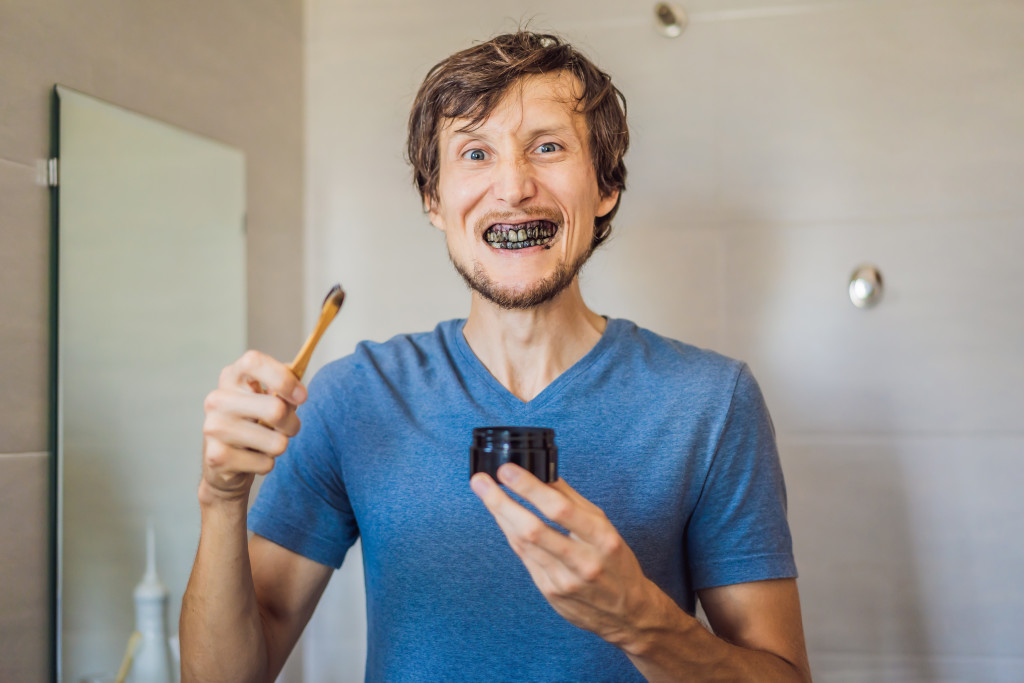Having stained teeth can be an embarrassing and emotionally draining experience. According to research, the prevalence of reported tooth discoloration was 9.8% during the study period. 86.8% of tooth discoloration was caused by pulpal necrosis, while only 0.7% was attributed to fluorosis.
That said, stained teeth can make you feel self-conscious about smiling, laughing, or even speaking in public. Fortunately, there are several methods for overcoming the problem of stained teeth so that you can enjoy a healthy and beautiful smile again. This article will discuss four ways to overcome stained teeth and restore your smile.
1. Avoid Darkly Colored Food and Beverages
The most obvious way to prevent discoloration is to avoid darkly colored food and beverages such as coffee, tea, cola, red wine, and sauce-based foods like tomato sauce or gravy. If you must consume these drinks and food, use a straw to limit contact with the teeth.
It is also essential to immediately brush your teeth after consuming dark-colored food and beverages. If a toothbrush or toothpaste is not available, rinse your mouth with water and avoid any sugary drinks that may cause bacteria build-up in the mouth. Additionally, some foods, such as blueberries, can cause staining if left on the teeth for too long. For this reason, it is better to rinse your mouth immediately after eating such foods.
Non-food and beverage items that can cause staining includes smoking, chewing tobacco, or even certain medications. These should be avoided altogether as they are not only bad for health but present a risk of discoloration as well. It is also important to take special care when consuming acidic foods and drinks such as juices, as these can erode the enamel of your teeth and affect their color.
2. Professional Teeth Whitening
Professional teeth whitening is one of the most effective methods for removing stains and restoring your pearly whites. This treatment can be done in a dentist’s office or at home using products such as dental strips, gels, bleaching trays, and more. Most professional treatments use peroxide-based solutions that lift discoloration from the enamel.
You can expect the results of professional teeth whitening to be dramatic. Depending on the severity and type of discoloration, results can range from a few shades whiter to an extremely noticeable transformation in color. The effects are immediate and long-lasting when compared to over-the-counter products. Professional treatments should be tailored to the individual user and monitored by a professional for the best results.
It is also important to note that professional teeth whitening may not be suitable for everyone, particularly those with sensitive teeth, gum disease, or decay. It’s important to discuss your options with your dentist before beginning treatment, in order to ensure the safety and effectiveness of the procedure.
3. Use Natural Remedies

There are also home remedies you can use to help remove surface stains on your teeth such as brushing with baking soda and hydrogen peroxide paste or rinsing your mouth with apple cider vinegar. Additionally, foods like oranges, strawberries, apples, and celery can help remove surface stains when eaten regularly.
You can also use natural remedies to help whiten your teeth in the form of gels, pastes, and liquids. Activated charcoal is a popular natural remedy used for this purpose as it acts like a magnet to draw out stains from your teeth. You can also create homemade whitening gels using hydrogen peroxide, baking soda, and water.
Oil pulling is another natural remedy that has been used for centuries to remove plaque and bacteria from teeth. To do this, you take a tablespoon of oil (coconut or sesame) and swish it around your mouth for 10-15 minutes before spitting out the oil. While these methods may not give you the same exact results as professional whitening treatments, they are an effective and cost-effective way to get your teeth looking brighter.
4. Regular Dental Visits
Finally, regular dental visits are essential for preventing stained teeth and maintaining a healthy smile. Your orthodontist can check for cavities and offer advice on how to keep your mouth healthy. Additionally, they can provide professional cleaning treatments which will remove plaque build-up from the surfaces of your teeth that can cause staining over time.
Your dentist can also identify deeper stains and help you determine the best course of action for getting rid of them. They may suggest professional teeth whitening services, or they may recommend other treatments such as bonding, veneers, and crowns to cover up deeply set-in staining. By visiting your dentist regularly, they can ensure that your teeth are healthy and free of stains so you can maintain a bright, beautiful smile.
In Closing
Stained teeth don’t have to be a permanent problem. By following the four tips outlined in this article, you can effectively overcome stained teeth and restore your beautiful smile. You can easily regain control of your oral health and gain confidence in smiling again.